Ecuadorian Food Dishes: Basic Overview
Common Ingredients
Common Cooking Methods
Courses
Meals
Key Taste
Eating Etiquette
Meal Presentation
Culinary Festivals
Influence and Fusion
Popular Types of Ecuadorian Dishes
-
Stews
In Ecuador, stews include a variety of meats, vegetables, and spices, all cooked slowly to blend the tastes and soften the textures.
These stews are a warm, filling choice, especially in the cooler, highland areas.
-
Grilled and barbecued dishes
Grilled and barbecued foods are a big hit in Ecuador, especially during festivals or at beachside gatherings.
These dishes are usually enjoyed with sides like plantains or a simple salad.
-
Cakes and pastries
Ecuadorians love their sweet treats, and their cakes and pastries reflect this. From light, flaky pastries dusted with sugar to moist, milk-soaked cakes, these desserts are a delight.
Ingredients like local fruits, cheese, and a variety of milks are common, making each bite a blend of sweet, creamy, and fruity flavors.
-
Fried dishes
Fried foods are a staple in Ecuadorian cuisine, with dishes that showcase the crispy, golden goodness of fried plantains or other local ingredients.
They’re often served with dips or as accompaniments to main meals.
Ecuadorian dishes are food offerings belonging to Ecuador, a country in South America. These dishes combine the rich indigenous basis with Spanish specialties and cooking ideas, as well as contributions from many other culinary traditions.
In addition, nearby Andean countries, such as dishes from Peru, play a considerable role in enriching the depth of Ecuadorian cuisine.
Ecuadorian dishes are a testament to the country’s diverse geography and biodiversity, which produce many popular ingredients for local dishes. Seafood, meat, potatoes, corn, and tropical fruits are notable elements.
I will tell you more about traditional Ecuadorian food, such as its main characteristics, global popularity, and health values.
Next, I will provide you with detailed descriptions of the 26 most famous dishes in Ecuador, along with general information about Ecuadorian cuisine and drink pairing suggestions.
26 Exciting Ecuadorian Dishes
Scroll down and discover the best 26 dishes Ecuador has to offer. Explore these using filters for ingredients, cooking styles, meal types, and when they’re typically enjoyed.
The filter also helps you to discover everything from cherished traditional meals and national favorites to creative fusion blends and street eats.
Fanesca
- National
- Traditional
Fanesca is a traditional Ecuadorian soup rich in history and flavors, typically consumed during Holy Week, which leads up to Easter. It is a suitable dish for this religious event, during which Catholics are prohibited from eating red meat.
Fanesca is a hearty, creamy blend of grains, legumes, and fish, specifically salt cod (bacalao). There should be 12 different types of beans and grains because of religious reasons.
The bacalao in fanesca represents Jesus, while the number 12 symbolizes Jesus’ 12 apostles. Ecuadorians usually eat fanesca with hard-boiled eggs and fried plantains at midday, which is the main meal in local culture.
The first recorded recipe for fanesca appeared in the late 19th century after centuries of interactions between indigenous practices and cooking ideas from Spanish cuisine.
Encebollado
- National
- Street Food
- Traditional
Encebollado, literally “cooked with onions,” is a popular fish stew in Ecuador, especially in coastal regions. It features fresh albacore cooked in a broth seasoned with tomatoes, onions, cilantro, and yuca (cassava).
The use of cassava gives encebollado a thick, satisfying texture. Many types of fish can replace albacore, such as tuna, bonito, and billfish.
Encebollado is a favorite stew to serve with sides of ripe avocado and plantain chips. Many locals regard it as an effective cure for hangovers.
Hornado
- Street Food
- Traditional
Hornado is a festive Ecuadorian dish that revolves around slow-roasted pork. Its name comes from the Spanish word horno, which means “oven/ kiln,” referring to the act of roasting a whole pig in a wood-burning oven.
Originating from the Andean highlands, hornado is a top-rated dish at local markets and festivals. People often marinate and baste the pork with a blend of garlic, spices, and beer or chicha (a traditional fermented beverage) or fruit juices, creating a complex flavor profile.
With crispy skin and juicy, succulent meat, hornado is an ideal match for llapingachos (potato patties), mote (hominy), salads, fried plantains, and aji sauce.
Guatita
- National
- Traditional
Guatita, also known as guatita criolla, is a highly flavorful tripe stew that holds a special place in Ecuadorian cuisine. Its taste is so robust that some people consider it an acquired taste and typically serve it in small portions.
The main ingredients of guatita are cleansed beef tripe, peanut sauce, tomatoes, onions, and various spices. These components result in a creamy, nutty, and savory stew that goes well with rice and avocados.
Originating as a humble dish, guatita is now very popular with Ecuadorians throughout the country. Many locals even consider it an ideal hangover cure.
Empanada
- Street Food
Empanada, literally “bread,” is an Ecuadorian baked or fried turnover made out of dough and a sweet or savory filling. It hails from Spanish cuisine and is also well-known in many Spanish-speaking countries.
Popular variants in Ecuador include empanadas de viento (filled with cheese), empanadas de morocho (made with corn-based dough and a meat filling), and empanadas de verde (made with green plantain dough and a cheese or meat filling).
Empanadas are a versatile and beloved snack and street food for all times of the day in Ecuador.
Ceviche
- Street Food
- Traditional
Ceviche is a popular seafood dish in Ecuador, especially well-known in coastal regions. Although many people associate ceviche with Peru, many Latin American countries, including Ecuador, prepare their own version of this seafood specialty.
The most popular types of seafood for Ecuadorian-style ceviche are corvina (a mild fish similar to sea bass) and shrimp, which are marinated in a blend of lime juice, onions, tomatoes, and cilantro. The citrus juice helps “cook” and tenderize the seafood without using heat.
Ecuadorians like to serve ceviche with popcorn, plantain chips, and patacones (fried green plantains) as an appetizer or even a light breakfast, particularly during hot weather and coastal holidays.
Llapingacho
- Street Food
- Traditional
Llapingacho is a traditional type of deep-fried potato patties or thick potato pancakes stuffed with cheese in Ecuadorian cuisine. Llapingacho was strongly associated with the city of Ambato in the Tungurahua province.
The potatoes used in llapingacho are mashed and seasoned with annatto for a distinct flavor and color. Locals widely enjoy these pancakes as a side dish with fried eggs, sausage, avocado slices, salads, and aji sauce.
This Ecuadorian potato-based dish dates back to pre-Hispanic times. Its name comes from the Creole language, with “llapina” meaning “to crush something into a mushy consistency.”
Seco
- Traditional
Seco is a well-known meat stew in Ecuador and Peru. It can be made with different types of meat to create many distinct variants, such as chicken (seco de pollo), beef (seco de carne), goat (seco de chivo), or fish (seco de pescado).
The preparation of seco involves slow-cooking meat with vegetables in a rich sauce of peppers, garlic, cilantro, spices, and chicha or beer. While seco means “dry” in Spanish, the stew is quite moist and saucy.
All types of seco go well with rice, plantains, and avocados. The use of alcoholic beverages in the sauce gives this stew an amazingly memorable taste.
Churrasco
- Street Food
Churrasco, or grilled steak, is a beloved dish in Ecuadorian cuisine. It is an individual plate served with various side dishes, unlike the Brazilian churrasco, which refers to a style of barbecue.
Ecuadorians usually prepare churrasco from local free-range cattle, which yields juicy and flavorful meat. The steak is usually thinly sliced and grilled before being served with rice, fried eggs, avocado, plantains, French fries, and chimichurri sauce (herby and garlicky sauce).
The Ecuadorian churrasco is a popular choice for a filling lunch or dinner. Grilled steak is usually served at churrascaria, the local term for steakhouses.
Locro
- Traditional
Locro is an iconic Ecuadorian stew that dates back to pre-Hispanic times. It is a thick, creamy, and nutritious stew that helps people deal with the cold weather in highland regions.
Locro is prepared with potatoes, queso fresco (unaged cheese), onions, garlic, annatto, and spices. Corn, beans, and meat or chicken are sometimes added for more flavor.
This rich Ecuadorian stew tastes best when served piping hot with sliced avocado, chopped cilantro, and aji sauce. Yawar lukru is a similar stew to locro, though it is made with lamb blood and offal.
Pescado Encocado
- Traditional
Pescado encocado, literally “coconut fish,” is an Ecuadorian dish prepared by cooking fish in a creamy coconut sauce. It was apparently inspired by enslaved Africans who worked on plantations in the tropical lowlands.
Firm white fish are the best ingredients for pescado encocado. The fish filets are marinated and cooked in a sauce of coconut milk, peppers, onions, and cilantro until they are rich, sweet, and a little spicy.
Bolón de Verde
- Street Food
- Traditional
Bolón de verde is a common Ecuadorian dish made with boiled and mashed green plantains, cheese, and chicharrón (fried pork belly or pork cracklings). This mixture is shaped into balls, which are grilled or fried to serve as a side dish or breakfast dish.
Bolón means “big balls” in the local tongue since these crispy-outside, tender-inside balls are the size of tennis balls. This plantain-based dish is also available in Peru under the name of tacacho, though it doesn’t always have a ball-like shape.
Alfajor
- Traditional
Alfajor, with alfajores as its plural form, is a beloved Ecuadorian sweet treat consisting of two round, sweet biscuits joined together. These two biscuits have a layer of dulce de leche or jam in the middle and are often dusted with powdered sugar.
Alfajores were invented by the Spanish, who, in turn, got the idea for them from Middle Eastern desserts. Alfajores were popularized in Ecuador and other South American countries in the 19th century, often incorporating local flavors, such as fruit fillings or chocolate coatings.
Fritada
- Street Food
- Traditional
Fritada, also known as fritada de chancho, is an Ecuadorian pork dish dating back to the 19th century. People prepare it by braising pork pieces in their own fat with various spices, beer, and garlic.
Every bite of savory fritada reveals a crispy exterior and a juicy, succulent interior. Typical accompaniments for this pork dish include llapingachos, mote, avocados, fried plantains, and aji sauce.
Corviche
- Street Food
Corviche is a flavorful snack from the coastal regions of Ecuador, particularly the province of Manabí. It is made by coating corvina fish in a dough of grated and mashed plantains and deep-frying the doughy balls.
Corviche pairs beautifully with a side of pickled red onions and aji sauce. While many people think of this snack as similar to British fish and chips, nobody serves it with fries in Ecuador.
Pan de Yuca
- Street Food
Pan de yuca is a traditional Ecuadorian bread made from yuca flour and cheese (often a soft farmer’s cheese). It is a gluten-free dish especially popular in the western region.
Locals prepare this cassava-based bread by mixing the ingredients into a doughy mixture, shaping the dough into small balls or crescents, and baking them until golden. Pan de yuca is a snack or breakfast item beloved for its chewy texture and cheesy flavor.
Tigrillo
- Traditional
Tigrillo is a renowned Ecuadorian breakfast dish hailing from the coastal regions. Its name was derived from the Spanish word for spotted wild cats in Central and South America, possibly referring to the golden color of this dish.
Ecuadorians prepare tigrillo by boiling and mashing green plantains before mixing them with cheese and scrambled eggs, resulting in a rich, creamy, and energy-rich mixture. A cup of coffee or hot chocolate is an ideal accompaniment to create the perfect breakfast.
Mote Pillo
- Traditional
Mote pillo, literally “hominy and eggs,” is a homely Ecuadorian dish originating from the Andean highlands. It consists of hominy sautéed with eggs, onions, garlic, and extra ingredients like aji sauce or fresh herbs.
Mote pillo offers a delightful contrast between the soft and slightly chewy texture of hominy with the fluffiness of scrambled eggs. Locals commonly enjoy this combo as a breakfast dish or a side to main courses.
Panettone
- Fusion
Panettone is a sweet, bread-like cake that Ecuadorians usually consume during Christmas and New Year celebrations. Originating in Italy, it arrived in Ecuador in the late 19th century with the waves of Italian immigrants flocking to Latin America.
Panettone is famous for its distinctive dome shape and fluffy yeast-leavened dough that is studded with candied fruits, raisins, and citrus zest. Many Ecuadorian versions feature the addition of tropical fruits or chocolate chips.
Patacone
- Street Food
- Traditional
Patacone, known elsewhere as tostone, is a popular Ecuadorian twice-fried snack or side dish made from green plantains. With a crunchy exterior and tender interior, it is the ultimate choice for pairing with various sauces or savory dishes.
To prepare patacones, locals peel, slice, and fry plantains in oil. Next, they flatten the plantains into thin discs and fry them again until patacones achieve a golden and crispy texture.
Humita
- Street Food
- Traditional
Humita is a time-honored Ecuadorian dough-based dish with deep indigenous roots, tracing back to the times before the Spanish colonization. It is a beloved breakfast or snack often accompanied by a cup of coffee or hot chocolate.
Humita calls for ground corn paste, eggs, onions, cheese (optional), and various spices. The ingredients are mixed into a thick dough, which is wrapped in corn husks and steamed or boiled to create a soft, moist, and savory specialty.
Carne en Palito
- Street Food
Carne en palito, literally “meat on a stick,” is a well-known street food in Ecuador, especially during public festivities and in coastal regions. It is a popular fair food usually sold at snack carts that charm fairgoers with the rich aromas of their fare.
Typical carne en palito consists of beef pieces skewered and grilled over an open flame. The beef is marinated beforehand in a blend of garlic, cumin, annatto, and other local spices, infusing the meat with a smoky, spicy flavor.
Oreja
- Traditional
Oreja, literally “ear,” is a puff pastry treat widely found in Ecuadorian bakeries, especially during the Carnival season. Its name stems from its ear-like shape, though many people remark that it actually looks like a heart.
Orejas are a crispy and sweet baked pastry that melts in your mouth. They are made from layers of buttery, flaky pastry dough that are sprinkled with sugar.
As a light pastry that melts in your mouth, orejas go well with a cup of coffee or hot chocolate.
Torta de Tres Leches
- Traditional
Torta de tres leches, literally “three milk cake,” is a popular cake in Ecuador. Its name refers to the three different types of milk used in soaking the sponge cake base, which are heavy cream, sweetened condensed milk, and evaporated milk.
Torta de tres leches is an incredibly moist, sweet, and creamy treat that people often top with whipped cream, meringue, and fruits like strawberries. Hailing from Spain, this festive cake became popular in Latin America in the 19th century as a staple for special occasions.
Espumilla
- Street Food
- Traditional
Espumilla, literally “foam,” is a famous Ecuadorian mousse-like dessert that dates back to the beginning of the 20th century or even earlier. Often sold by street vendors, it is a renowned treat with children.
People make espumilla by whipping guava pulp with egg whites and sugar until the mixture reaches a light, fluffy texture with a sweet and fruity taste. Espumilla comes in many colors and is typically piped onto cones or cups and sprinkled with sprinkles or grated chocolate.
Arroz con Leche
- Traditional
Arroz con leche is the Ecuadorian version of rice puddings. It first appeared in the Muslim world before being picked up by the Spanish, who eventually spread it to many Latin American countries, including Ecuador.
Sweet, creamy, and tender arroz con leche is prepared by simmering rice in milk with sugar, cinnamon, and sometimes lemon zest. As a versatile dessert, rice puddings are suitable for serving warmth and cold for all occasions.
After guiding you through the most popular Ecuadorian dishes, I will focus on the main features of Ecuadorian cuisine.
What Is Special About Ecuadorian Cuisine?
To have a good understanding of Ecuadorian dishes, you should dive into the following common traits of local fare.
Indigenous cuisine (especially Inca cooking tradition) and African and Spanish influences lay the foundation of Ecuadorian culinary arts. Neighboring countries in the Andean region, especially Peru, also contribute to Ecuadorian cuisine.
In addition, certain culinary traditions from other countries around the world, such as Italy, Germany, and China, play a role in shaping Ecuadorian food due to migration or cultural exchange.
The climate in Ecuador allows for year-round farming of a wide variety of fruits and vegetables. This abundance of fresh produce is a hallmark of Ecuadorian cuisine.
Ecuador’s varied geography contributes to the development of many dishes. From the Amazon rainforest and the Andes mountains to the coastal plains, local fare enjoys a diverse range of ingredients and dishes.
Seafood on the coast, potatoes, corn, meat in the highlands, and tropical fruits in the Amazon are just a few staple ingredients derived from Ecuador’s rich environment.
Cultural traditions and festivities are significant factors that shape Ecuadorian cuisine, with many dishes associated with holidays and celebrations. Catholic festivities are especially important events since the majority of the Ecuadorian population practices this religion.
Next, let’s go over the most excellent food and drink pairings in Ecuadorian cuisine.
What Are the Best Beverages for Accompanying Ecuadorian Dishes?
Serve the five following types of beverages with Ecuadorian dishes, and you will gain a deeper appreciation of local cuisine.
Colada Morada
Colada morada is a traditional Ecuadorian beverage made with starchy corn flour, sweet fruits, and spices. Its complex flavor profile pairs well with light dishes like pan de yuca, humita, and espumilla.
Horchata
The Ecuadorian version of horchata is a refreshing herbal tea made with various aromatic plants and herbs. This beverage can accompany various sweet dishes, such as empanadas, llapingacho, and torta de tres leches.
Aguardiente
As a strong sugar cane liquor, aguardiente is an ideal beverage for savory or meat-based dishes, including ceviche, seco, and fritada.
Beer
Beer is a versatile option for many popular main dishes and snacks in Ecuadorian cuisine, such as encebollado, churrasco, and patacones.
Coffee
Strong and robust Ecuadorian coffee agrees with various desserts and sweet treats, namely alfajores, panettone, and arroz con leche.
Have you tried Ecuadorian food before? I’d love to hear about your experience in the comment section. Before you leave, tell your friends about my list of Ecuadorian dishes to spread the love of this amazing cuisine.


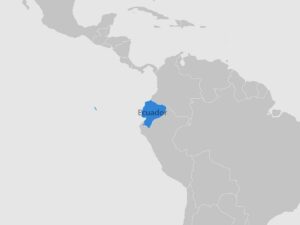
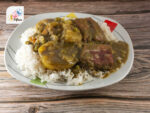
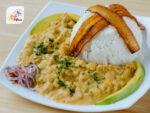
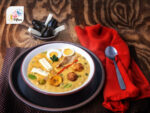
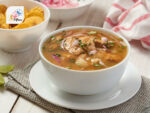
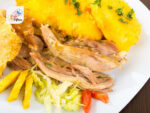
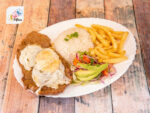





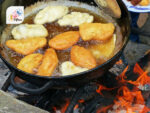
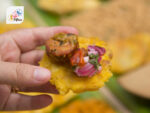


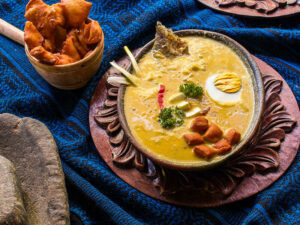
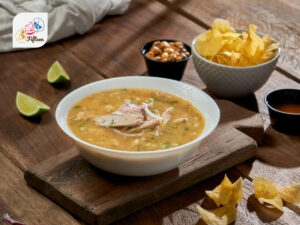
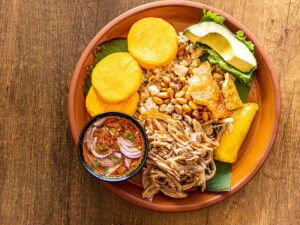
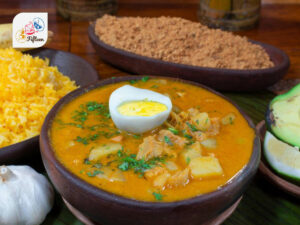
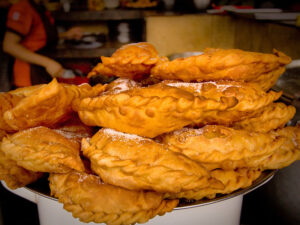
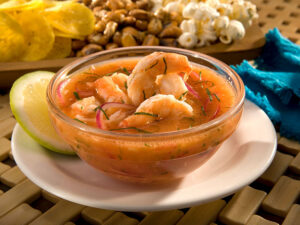
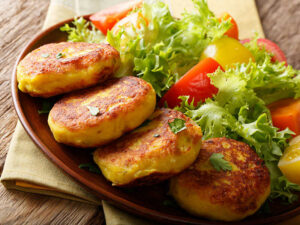
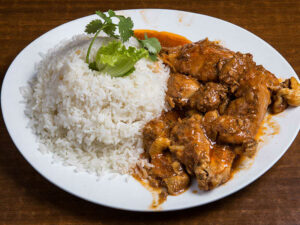
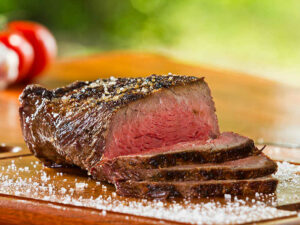
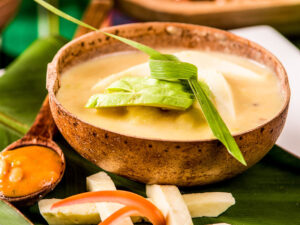
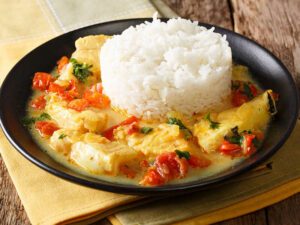
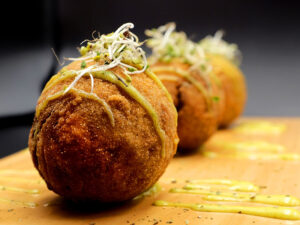

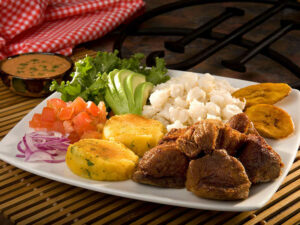
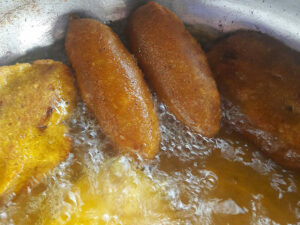
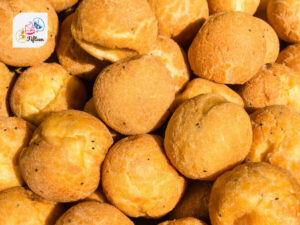
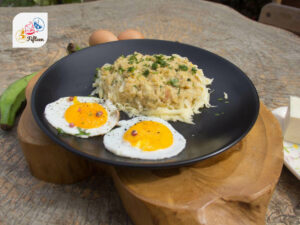
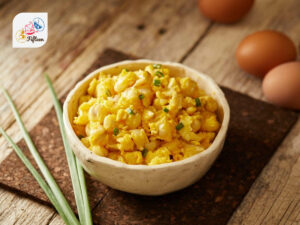

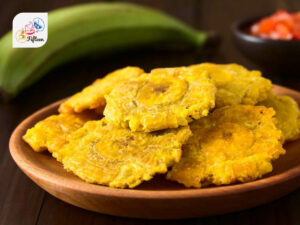
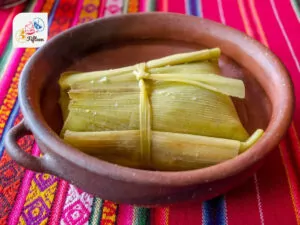
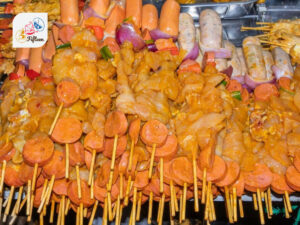
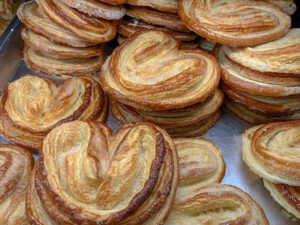


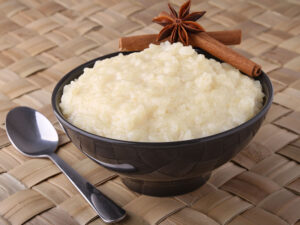
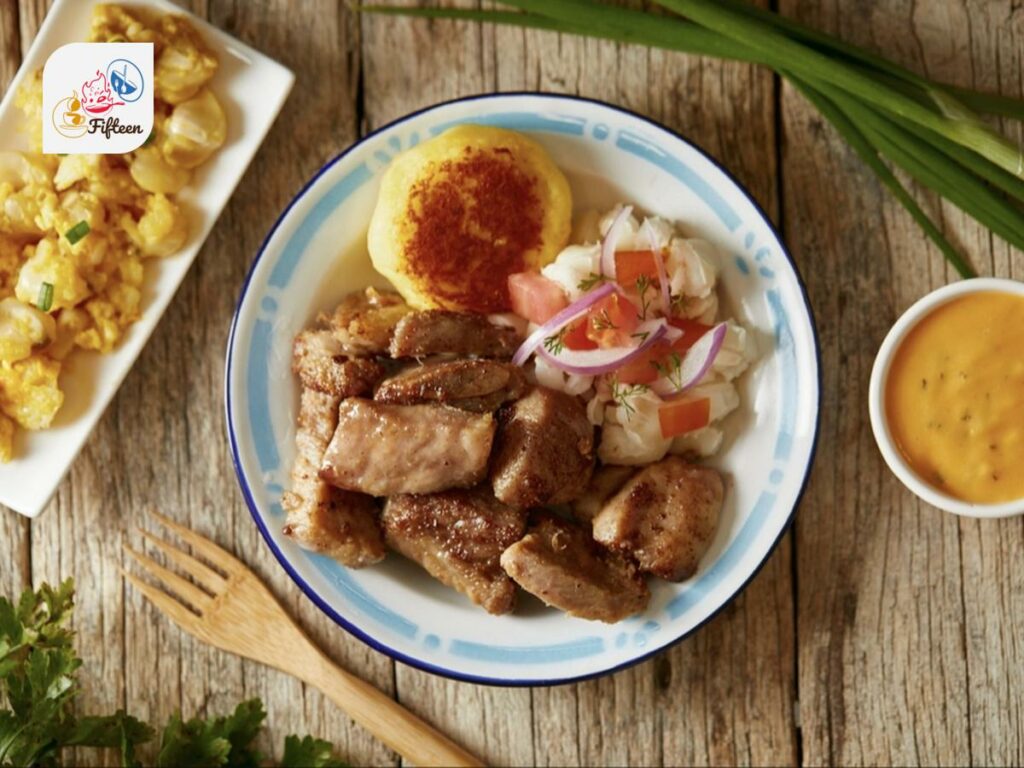
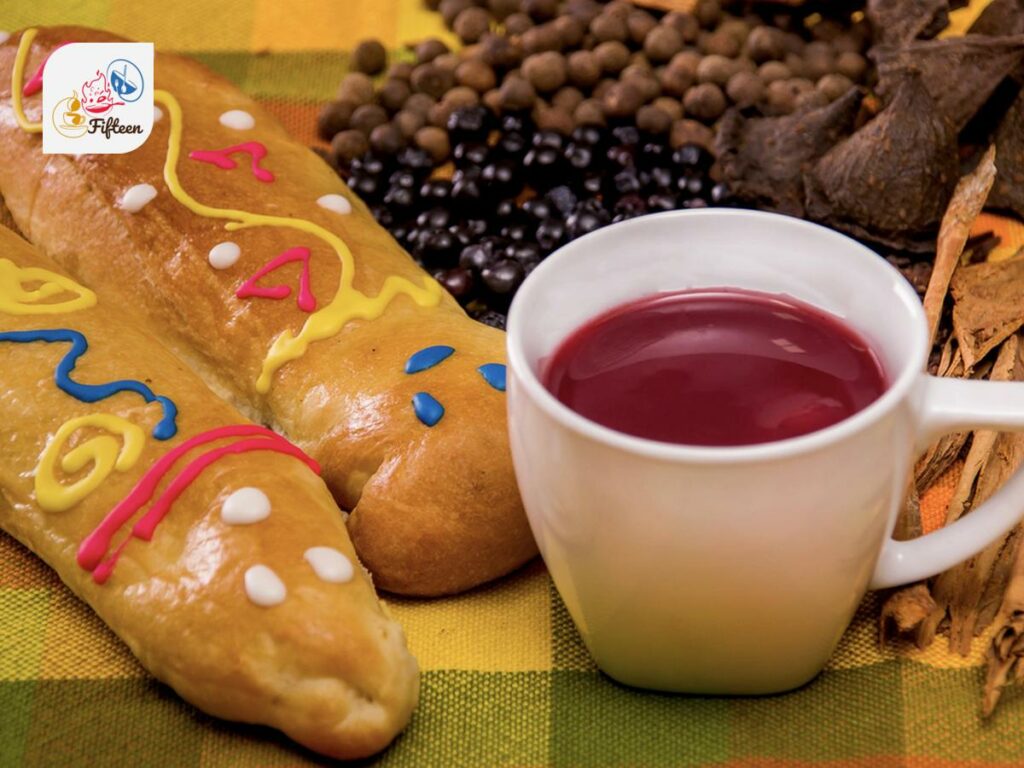

Jamie Scott
Editor in Chief, Senior Content Writer
Expertise
Home Cooking, Meal Planning, Recipe Development, Baking and Pastry, Food Editor, Cooking-video Maker, Western Food Evaluation Expert
Education
Le Cordon Bleu College of Culinary Arts
Local Community College, New York, NY
Jamie Scott is a skilled culinary expert and content creator specializing in Western cuisine. With over 15 years in the culinary field and formal training from Le Cordon Bleu, Paris, Jamie deeply understands how to blend nutrition with delicious flavors. His passion for cooking matches his commitment to making healthy eating accessible and enjoyable.
On Fifteen.net, Jamie brings a fresh perspective to classic dishes and beverages, offering readers insightful recipes, cooking tips, and a fresh view on meal planning that emphasizes taste, health, and simplicity.